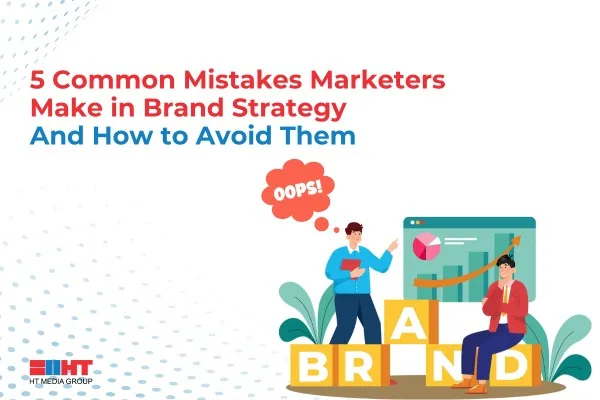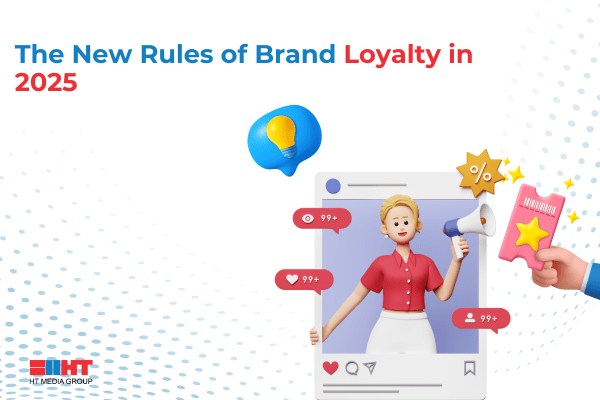The key to a long-term marketing success is a strong brand strategy. It is the roadmap that defines all the decisions you make, be it your visual identity or customer relations. However, even the most considerate plans can end up as failures when you walk into the usual traps. Such pitfalls may water down your message, disorient your audience, and eventually cut your brand short of connecting and expanding.
The positive news? All these problems are quite manageable. Having examined the five most frequent pitfalls of brand strategy, it is time to get to the most valuable part, talking about how these pitfalls may be addressed in practice.
Know More About Brand Marketing
- Top Brand Marketing Lessons from Successful Business Summits
- Brand Marketing Strategies to Enhance the Funnel
- Brand Marketing in 2025: How to Stay Ahead in a Rapidly Evolving Landscape
Mistake #1: Targeting the Wrong Audience with Your Brand Strategy
Trying to appeal to all is one of the greatest mistakes that a brand can make. The problem is that when your brand strategy is too wide, your message becomes too diffuse and weak. This usually leads to the inability of associating with anyone in a meaningful way since your brand has no identity and purpose to a particular group.
How to prevent it: Just identify your dream customer accurately. Get past simple demographics such as age and location. Create elaborate buyer personas that elaborate on their motivations, daily problems, desires, and even communication channels of their choice. What are the issues that they are encountering that your brand can address? What are their values? When you get a clear vision of your audience, you can start to create messages that actually connect with their needs and create a loyal community around your brand. This narrow idea will make sure that your marketing will be efficient and effective.
Mistake #2: Inconsistent Brand Identity Hurts Your Brand Strategy
Consider a business that has a very modern and sleek online presence, but when you enter their social media it is old and cluttered. Or more formal, corporate tone in its press releases and more casual, informal tone in the customer service. This kind of discrepancy causes misunderstanding and a lack of confidence. Your brand identity is more than just a logo, it is the cohesive collection of images, messages, and tones that would help your brand be recognizable and trustworthy.
How to avoid it: Come up with comprehensive brand standards. This is where by the principles on how your brand is depicted at each point of interaction are. It must not only consist of logo application and colours/typefaces you are using but should also cover your photography style, brand voice and even the directions on how to address customers. Ensure that you pass these guidelines to all your team members and they adhere to them. Periodically, audit your marketing material and digital assets to make sure that everything is consistent and that it helps to create a proper representation of your brand. Consistency will assist in creating awareness and in developing your brand strategy.
Mistake #3: Failing to Communicate Core Values in Your Brand Strategy
Consumers today want more than a product or service; they want brands. They desire to associate with companies that are sincere and serious in what they do. Mission and values are not evident in your brand, and you lose a great chance to be closer to your audience and establish the stronger and valuable relationship with them. Individuals desire to patronize companies whose value systems they share.
How to avoid it: Begin by defining what your brand really represents. Why do you exist in the first place other than to make a profit? What are your values? When these core values are established, incorporate them throughout your brand. Incorporate them into your marketing messages, into your culture as a company, into how you actually act in the real world. As an example, sustainability is a core value, and it is possible to show it by eco-friendly sourcing, responsible packaging, and community activities, but not by stating it. Being a good role model will demonstrate to your audience that you are not just talking about values, but they are being acted out in how you run your business a crucial element of your brand strategy.
Mistake #4: Weak Positioning Weakens Your Brand Strategy
In a busy market place, failure to stand out implies that your brand is swallowed by the noise. When your brand positioning is generic you are not presenting potential customers with a strong incentive to purchase you over another supplier. This is where your unique selling proposition (USP) comes in and makes you stand out and be memorable.
How to avoid it: It begins by determining what is really unique about your brand. What is your competitive edge? Does it involve a better customer service, a new product feature, a special quality or a highly efficient process? Carry out competitor research and find out how other brands are positioning themselves within your space. This will assist you to identify gaps or areas in which you can differentiate. Then create a short, sweet statement that explains what your brand has that is unique to it and ensure that it is at the core of everything you say. Declaring what differentiates you is a bold move that will enable you to establish your own niche in the market and enhance your entire brand strategy.
Mistake #5: Failing to Adapt Your Brand Strategy
A brand strategy is not a document that you develop once and put it away. The market is dynamic, the demands of consumers are changing, and new entrants come in. Having a definite plan and not monitoring its performance and implementing the required amendments is a sure way to become obsolete.
How to avoid it: Identify some of the quantifiable Key Performance Indicators (KPIs) which are directly linked to health of brand and perceptions to brand. This may be as brand awareness (e.g. survey or social listening), customer loyalty (e.g. repurchases, referrals) or brand sentiment (e.g. review analysis and social media comments). These metrics should be monitored by various methods and tools on an ongoing basis. Revision of the information frequently to know what is going well, what is not and anything new that can be an opportunity. Consider your brand strategy as an ongoing process, which you continuously refine, based on the emerging information and market data. This proactive approach will make your brand current and sustainable.
Partnering with HT Brand Studio for Brand Success
It may be a major challenge to make sense of the complexities of brand strategy, but you are not alone in it. HT Brand Studio is a focused centre of brands that require professional support in such spheres as a persuasive narrative, successful campaigning, and profound audience connection.
We help brands to adopt these best practices. As an example, data-driven solutions will allow us to find and focus on the most suitable audiences, establish and maintain brand consistency across all channels, and generate narratives that would resonate and communicate your values. We can even assist you to respond to some of the following questions like what is your differentiated position and how you can communicate effectively on the same with a clear action plan. Also, we help you to use the tools and measures required to turn your brand strategy dynamic and proactive to the changing market trends.
Whenever you need professional help to create an effective, result-driven brand, you can contact HT Brand Studio to discuss it.
Frequently Asked Questions
Why is identifying a target audience so critical to brand strategy?
Targeting the right audience ensures your brand messaging resonates with the people most likely to connect with and buy from you. Without a clear focus, your brand may come off as generic and fail to build lasting connections.
How does inconsistent branding affect customer trust?
When your brand visuals, tone, and messaging vary across platforms, it creates confusion and reduces credibility. Consistency helps your audience recognize and trust your brand over time.
What role do core values play in brand strategy?
Core values humanize your brand and help build emotional connections with customers. Brands that clearly express and live their values are more likely to gain loyal, purpose-driven followers.
What is brand positioning, and why is it important?
Brand positioning defines how your brand is perceived in the marketplace relative to competitors. Strong positioning with a clear USP helps your brand stand out, attract attention, and drive preference.
Can a brand strategy be adjusted over time?
Absolutely. A brand strategy should be revisited and refined regularly. Monitoring brand performance and market shifts allows you to adapt and stay relevant in a fast-changing environment.
Ready to take your brand to the next level? Connect with us today to explore how HT Media can amplify your presence across our diverse portfolio of 25+ brands and properties. Let's turn your brand vision into reality!



















Comment